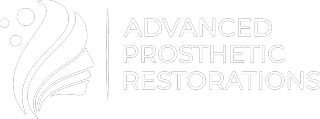Frequently Asked Questions About Anaplastology Treatments
There are many factors that will be considered when deciding on the retention method that is best for you:
- Overall health and anatomical considerations.
- Manual Dexterity level. Are you able to use your hands for small motor movements? Do you have any limitations in dexterity such as syndactyly (fused fingers) or a mechanical upper extremity prosthesis ?
- Activity level (sports, hobbies)
- Interest in, and ability to have more surgical procedures.
- Access to continued care (post- surgery follow up as well as prosthetic maintenance)
- Family support.
- Cost of treatment (implant retention vs. conventional methods).
- Expectations, desires, and interest in wearing a removable prosthesis.
- Quality of life and emotional enhancement with a prosthesis.
Facial and somato prosthetic devices are an essential part in restoring the physical and psychological well being for patients with missing or disfigured anatomy due to trauma, congenital abnormalities, or disease such as head and neck or skin cancer. After receiving a prosthetic ear, nose, orbit, or part of the body, you may be able to gain renewed function, aesthetics and a sense of confidence. The restoration of self-esteem is an invested accomplishment for both the patient an anaplastologist, as the primary goal of treatment is to help improve quality of life.
Each prosthesis is unique in its design, makeup and method of retention. All prostheses are removed daily by the patient. Those that present with adequate bone quantity and other qualifying factors may be a candidate for osseointegrated implant retained prostheses. With this retention method, small titanium implants, similar to dental implants are surgically placed into the bone and used to anchor the removable silicone prosthesis that snaps onto a bar and clip or magnet system. The option of prosthetic retention through implant retentions gives you the self confidence that their prosthesis is in the correct position each time. You can easily take it on and off, even without the mirror.
Due to the uniqueness of each patient’s needs, it is important that the retention method and treatment plan for reconstruction are developed with input from our partners in medicine, dentistry and rehabilitative services. The recommended retention method for your prosthesis will be based on numerous factors including bone quantity, prior radiation treatment, dexterity (ability to work with your hands), and your activity level.
The form of your missing anatomy is created by 3D printing a mirrored image of your existing ear, or orbital anatomy taken from a clinical impression or scan. This 3D printed model based on the exact size and shape of your opposing anatomy, will be converted into wax and used in clinical sculpting sessions. During these clinical sculpting sessions, you and your family will be able to give feedback on the size, shape and position of the future prosthesis. Your input and participation in the process is of upmost importance. For nasal patients, a form can be created based on the shape of a relative’s nose, or from previous photos or CT scans.
Once you are pleased with the final sculpture, we will make the mold which is unique to your prosthesis. This labor-intensive mold making process sets the details and thin sculpted margins in stone – literally! All clinical and laboratory processes are completed by the Anaplastologist.
We will formulate numerous colors to match your unique skin tone. These colored glazes are created from health grade silicone, pigments, and small colored fibers to help replicate the flesh tones, vascularity and distinctions in your anatomy. The colored silicone glazes are then intrinsically painted in layers into the mold. At this point all the details in your anatomy are mimicked, even down to the small freckles and blood vessels. Once the silicone has been processed, external color touch ups may be added, and for orbital prostheses, each hair in the eyebrow and eye lashes are inserted individually.
You may need to learn new mannerisms when wearing a prosthesis (for example, a patient wearing an orbital prosthesis will need to learn to look up when ordering from a menu and turning head to speak to someone). It is important to continue this rehabilitation with positive family and community support.
It is extremely important to follow proper maintenance of your prosthesis and your skin in the affected area. Unfortunately, a prosthesis does not remain vibrant forever. It will start to fade in color and the thin silicone edges will break down over time, causing the need for a new prosthesis to be fabricated. Prostheses must be remade every 2-4 years to update the color and assess if there have been any tissue changes that affect the fit, so wearing a prosthesis is an ongoing commitment.
Patients may seek our services from an acquired defect such a surgical resection of a cancerous tumor. These types of surgical resections not only cause disfigurement, but also may cause the patient to lose function in their speech, and swallowing. Adhesive retained prostheses are optimal interim solutions for those patients who are post resection of a malignant tumor. This type of prosthesis does not require any prior surgical intervention and esthetically masks the defect while keeping reconstructive options open for the patient.

